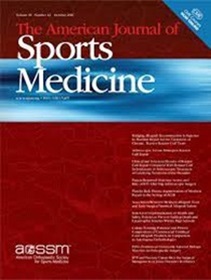Bicycle Set-Up Dimensions and Cycling Kinematics: A Consensus Statement Using Delphi Methodology.
IF 9.3
1区 医学
Q1 SPORT SCIENCES
引用次数: 0
Abstract
Bicycle set-up dimensions and cycling kinematic data are important components of bicycle fitting and cyclist testing protocols. However, there are no guidelines on how bicycles should be measured and how kinematic data should be collected to increase the reliability of outcomes. This article proposes a consensus regarding bicycle set-up dimensions and recommendations for collecting cycling-related kinematic data. Four core members recruited panellists, prepared the document to review in each round for panellists, analysed the scores and comments of the expert panellists, reported the decisions and communicated with panellists. Fourteen experts with experience in research involving cycling kinematics and/or bicycle fitting agreed to participate as panellists. An initial list of 17 statements was proposed, rated using a five-point Likert scale and commented on by panellists in three rounds of anonymous surveys following a Delphi procedure. The consensus was agreed upon when more than 80% of the panellists scored the statement with values of 4 and 5 (moderately and strongly agree) with an interquartile range of less than or equal to 1. A consensus was achieved for eight statements addressing bicycle set-up dimensions (e.g. saddle height, saddle setback, etc.) and nine statements for cycling kinematic assessment (e.g. kinematic method, two-dimensional methodology, etc.). This consensus statement provides a list of recommendations about how bicycle set-up dimensions should be measured and the best practices for collecting cycling kinematic data. These recommendations should improve the transparency, reproducibility, standardisation and interpretation of bicycle measurements and cycling kinematic data for researchers, bicycle fitters and cycling related practitioners.自行车设置尺寸与骑行运动学:使用德尔菲方法的共识声明。
自行车安装尺寸和骑行运动学数据是自行车试骑和骑车人测试协议的重要组成部分。然而,对于如何测量自行车以及如何收集运动学数据以提高结果的可靠性,目前尚无相关指南。本文提出了关于自行车安装尺寸的共识和收集自行车运动学相关数据的建议。四名核心成员负责招募小组成员、准备每轮小组成员审查文件、分析专家小组成员的评分和意见、报告决定并与小组成员沟通。14 位具有自行车运动学和/或自行车装配研究经验的专家同意作为专家组成员参与讨论。小组成员按照德尔菲程序进行了三轮匿名调查,提出了一份包含 17 项陈述的初步清单,并使用五点李克特量表进行评分和评论。当超过 80% 的小组成员对声明的评分为 4 分和 5 分(基本同意和非常同意),且区间小于或等于 1 时,即达成了共识。有 8 项声明涉及自行车设置尺寸(如坐垫高度、坐垫后移等),有 9 项声明涉及自行车运动学评估(如运动学方法、二维方法等),这些声明已达成共识。这份共识声明提供了一份建议清单,内容涉及如何测量自行车设置尺寸以及收集自行车运动学数据的最佳实践。这些建议应能提高自行车测量和自行车运动学数据的透明度、可重复性、标准化以及对研究人员、自行车装配人员和自行车相关从业人员的解释。
本文章由计算机程序翻译,如有差异,请以英文原文为准。
求助全文
约1分钟内获得全文
求助全文
来源期刊

Sports Medicine
医学-运动科学
CiteScore
18.40
自引率
5.10%
发文量
165
审稿时长
6-12 weeks
期刊介绍:
Sports Medicine focuses on providing definitive and comprehensive review articles that interpret and evaluate current literature, aiming to offer insights into research findings in the sports medicine and exercise field. The journal covers major topics such as sports medicine and sports science, medical syndromes associated with sport and exercise, clinical medicine's role in injury prevention and treatment, exercise for rehabilitation and health, and the application of physiological and biomechanical principles to specific sports.
Types of Articles:
Review Articles: Definitive and comprehensive reviews that interpret and evaluate current literature to provide rationale for and application of research findings.
Leading/Current Opinion Articles: Overviews of contentious or emerging issues in the field.
Original Research Articles: High-quality research articles.
Enhanced Features: Additional features like slide sets, videos, and animations aimed at increasing the visibility, readership, and educational value of the journal's content.
Plain Language Summaries: Summaries accompanying articles to assist readers in understanding important medical advances.
Peer Review Process:
All manuscripts undergo peer review by international experts to ensure quality and rigor. The journal also welcomes Letters to the Editor, which will be considered for publication.
 求助内容:
求助内容: 应助结果提醒方式:
应助结果提醒方式:


